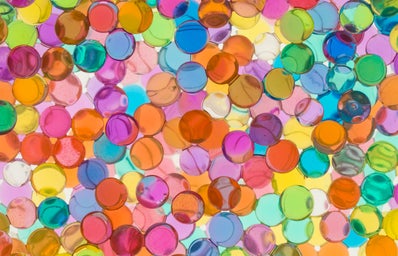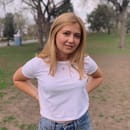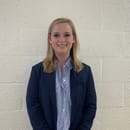Leah Rodman, a Wake Forest sophomore from Miami, is majoring in Politics & International Affairs and Studio Art. She is an artist, painter, and active supporter of creating artwork as a tool for social and political justice. After college, Leah aspires to become a human rights lawyer, while also staying involved in the art world.
Her Campus: How has Miami influenced your perspective on the arts?
Leah Rodman: Growing up in Miami, I was exposed to many different types of art. My favorite times of the year are during the Art Basel and Art Miami fairs where I am fortunate enough to see groundbreaking contemporary art. Miami has influenced my view on the art world, not only in museum and gallery exhibitions, but in street art. Street art is seen by the public and has a strong social purpose. During my senior year, I actually worked with a human rights organization called Street Art for Mankind that promotes social justice through street art.
HC: That’s incredible. What was it like working with Street Art for Mankind?
LR: I didn’t directly produce art for the organization, but I volunteered and helped install an exhibition in Miami that promoted awareness for victims of child slavery around the world. It was an empowering experience that inspired me to combine my interests in human rights and contemporary art in the future, and I had the opportunity to meet the artists who had an interest in using their platforms to promote social justice.
HC: Who is your biggest artist inspiration?
LR: I have a lot of favorites, I’ve always been really interested in Frida Kahlo’s work and other feminist artists in the contemporary art world. Some others are Swoon and the Guerrilla Girls, and when I was in Venice I saw the work of Zanele Muholi and Njideka Akunyili Crosby who I love.
HC: What was the best part of visiting the Venice Biennale last summer?
LR: I liked that the Venice trip combined my two passions in political science and studio art. The Venice Biennale occurs every 2 years in Venice and it’s one of the biggest international art fairs, so the Biennale exposed me to such groundbreaking artwork on social issues around the world. Each country at the Biennale has a representative and it was interesting to learn about how the arts were funded in each country and the specific messages that each country’s representative tried to promote in their artwork. I learned about which countries were underfunded in the arts and what ways they were changing the role of the arts in their communities. It was also incredible to explore the artwork at the Biennale with students from different backgrounds and fields of study, and learn from one another’s interpretation of the works we were looking at.
HC: What is an example of one of these underfunded countries that you learned about?
LR: It was actually the first year that Ghana was represented. Each country showed their work in their own pavillion and the Ghana pavillion showed lots of environmentally conscious artwork through the use of recycled materials. The pavillion included a multitude of mediums and artists that allowed viewers to engage with the history of the country and witness the diversity in their artistic representations.
HC: What was your favorite artwork from the Biennale?
LR: My favorite artwork from the Biennale was from the Philippines pavillion. The interactive artwork showed an optical illusion with mirrors to create a falling, infinity effect as the viewer walked inside the installation. The artwork captured magical realism in this mystical universe based on ideas of displacement, disaster, and destruction. The installation was very politically charged, yet at the same time it was extremely beautiful and created a sense of hope and unity among the viewers.
HC: Where do you see yourself in 20 years in relation to the arts?
LR: My experiences in the arts have definitely influenced my career path, but I ultimately want to become a human rights lawyer while also working in collaboration with an arts foundation that promotes human rights issues. I would love to work in Chicago, or possibly another city like Miami and become involved in the arts community there.



